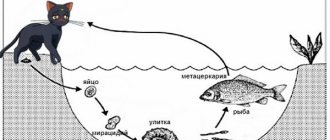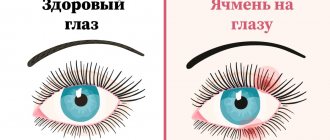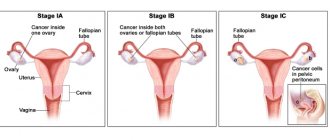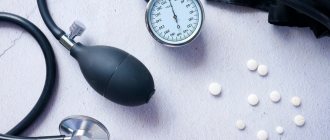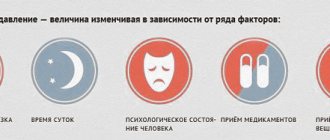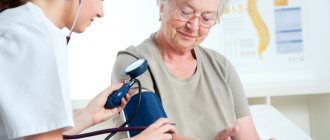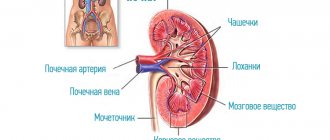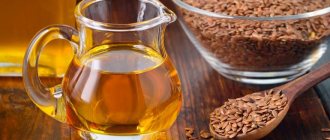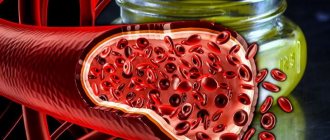Who is at risk?
Hypertension is associated with many pathologies, external influences and internal changes in the body. It most often occurs in people with the following risk factors:
- Age over 65 years.
- Overweight or obesity.
- Low physical activity, sedentary lifestyle.
- Excessive consumption of alcoholic beverages, smoking.
- Abuse of coffee.
- High emotional stress, chronic stress and sleep disturbances.
- Failure to comply with work and rest schedules.
- Hereditary tendency to high blood pressure.
- Unbalanced diet, lack of fruits and vegetables in the diet, excessive consumption of table salt.
- Fluctuations in hormonal levels during pregnancy, taking hormonal contraceptives, early transition to menopause.
- Endocrine diseases: diabetes mellitus, hyperthyroidism, etc.
Hibiscus
It is known that red tea can stabilize blood pressure. So, how to brew hibiscus to lower blood pressure? The recipe for truly healthy tea is quite simple: pour a teaspoon of the dried ingredient with hot water, the temperature of which will not exceed 60 degrees. After 15 minutes of brewing in a closed container, the tea will be ready.
It should be noted that reducing pressure in this way is only possible if certain rules are followed. In particular, you should drink this tea only 2-3 hours after eating. Moreover, hypertensive patients are recommended to drink this type of tea only in cold or warm form - this significantly reduces the risk of an increase in heart rate, which, as a rule, provokes an even greater increase in blood pressure.
By the way, after drinking tea, it is best not to throw away the remaining flowers, but to chew them - this component contains pectin, which also activates the process of reducing blood pressure.
Hypertension and pregnancy
Pregnancy is also often accompanied by sudden jumps in blood pressure. However, existing hypertension can cause complications associated with bearing a child. Most often they occur in the second half of pregnancy and include:
- Late miscarriage.
- Premature birth.
- Preeclampsia and eclampsia.
- Intrauterine growth retardation.
In addition, high blood pressure increases the risk of postpartum hemorrhage, which is one of the most dangerous complications.
Therefore, pregnant women are advised to undergo clinical observation by a therapist with a frequency of examinations once a month during the first half of pregnancy and 2 times a month in the second, as well as appropriate antihypertensive therapy. Also, a regular examination by an ophthalmologist, fetal ultrasound, ECG and ECHO-CG should be carried out regularly.
Garlic
Does garlic lower blood pressure? Yes, and, by the way, it does it very well and quite quickly. In addition, this product helps reduce cholesterol levels in the blood, which also ensures a higher level of health for the human body.
With its active effect, this product stimulates the nutrition of the heart muscle, which stabilizes the process of blood movement in the coronary vessels, and also reduces the risk of developing atherosclerosis.
To prepare an effective tincture, you need to cut a couple of cloves of garlic into thin slices, and then pour a glass of boiling water over them. After this, the product should be allowed to brew overnight. To achieve a quick positive result, you need to drink a glass of this infusion every day, in the morning and evening (a glass).
Practice shows that regular use of tincture prepared according to this recipe can reduce blood pressure by 7-10%. in fact, this circumstance indicates that garlic infusion is the best home remedy for lowering blood pressure.
Main symptoms of high blood pressure
With prehypertension and in the initial stages of hypertension, there are often no symptoms of increased blood pressure, and a person becomes aware of this problem during control measurements during preventive examinations or undergoing diagnostics for other pathologies.
If high blood pressure persists for a long time, high levels or poor tolerance of hypertension, the following symptoms may occur:
- Pressing or throbbing headache.
- Dizziness, pulsating tinnitus.
- Flashing "flies" before the eyes.
- Increased and rapid heartbeat.
- Redness of the facial skin and increased sweating.
- Anxiety, excessive irritability.
- Chronic fatigue, malaise.
- Swelling and numbness in the limbs.
Lifestyle change
The most important tool in the fight against high blood pressure is lifestyle modification. This allows you to eliminate or minimize the influence of most risk factors, thereby stopping or slowing down the progression of hypertension and minimizing the risk of complications.
Basic tips for changing lifestyle for hypertension include: controlling body weight, nutrition, giving up bad habits and avoiding stress.
Control your body weight
Obesity is considered one of the key factors causing high blood pressure. It is believed that each additional kilogram of weight increases blood pressure by approximately 1 mmHg. In addition, this disease aggravates the general condition of the cardiovascular system and the entire body, making it more vulnerable to other pathologies.
Increase your physical activity
Regular exercise, even something as simple as walking, can be just as effective as medication for lowering blood pressure. Physical activity strengthens the heart, helping to normalize the functioning of the cardiovascular system. It can also help fight obesity.
A total of 150 minutes of moderate exercise per week or 75 minutes of intense exercise in most cases can reduce levels by 5-8 mmHg.
Important ! It is also useful to do neck exercises. Read more about Shishonin’s gymnastics for hypertensive patients in a separate article.
Limit your consumption of alcohol, coffee and tobacco
Alcoholic drinks can be both good and bad for your health. Drinking alcohol in moderation (up to 340 ml of beer, 150 ml of wine or 40 ml of strong alcohol) can potentially reduce blood pressure by approximately 4-5 mmHg. However, large volumes can greatly increase performance and in the long term lead to deterioration of health.
Studies have also shown that 1-2 cups of coffee increases blood pressure by 30-40 mmHg. for up to 3 hours due to narrowing of blood vessels and increased stress. Tobacco products have similar effects due to the substance nicotine they contain.
Limit your salt intake
It is believed that even a slight reduction in the amount of table salt in the diet can reduce blood pressure by about 5-6 mmHg. The most optimal amount is about 1.5 g of salt per day.
Make adjustments to your diet
A diet rich in whole grains, fruits, vegetables and low-fat dairy products, as well as limiting saturated fat and cholesterol, can reduce blood pressure by 10-11 mm Hg. for hypertension. This approach is called the DASH diet.
It is also worth paying more attention to potassium-containing products. Potassium helps eliminate sodium from the body, which leads to a decrease in blood pressure. Therefore, it is recommended to increase the consumption of such foods as:
- Leafy greens.
- Tomatoes and sweet potatoes.
- Avocados, bananas, oranges and apricots.
- Tuna and salmon.
- Nuts and legumes.
- Milk and fermented milk products: yoghurts, kefir.
Changing established eating habits is a complex, time-consuming process. Special applications for mobile phones or a paper diary can help with this. With their help, you can count the calories, proteins, fats and carbohydrates, micro- and macroelements eaten. Also pay attention to the labels of the products you buy.
A food diary helps you maintain a healthy lifestyle. Photo: VadimVasenin / Depositphotos
Normalize your work and rest schedule
Available scientific evidence suggests that working more than 40 hours per week increases the risk of developing hypertension by 17%. Also, a busy work schedule does not provide the opportunity to fully take care of your health - it leaves no opportunity for regular exercise, monitoring your diet, proper rest and sleep.
Avoid mental and emotional stress
Constantly being in a stressful state directly increases blood pressure and reduces the effectiveness of all other treatment and prevention methods. Take time to analyze all the factors and circumstances that create emotional stress: work, family, finances or illness. Determine the reasons, think about how to avoid stress or reduce its impact.
Meditate and use deep breathing techniques
The benefits of meditation and deep breathing techniques include reducing stress and anxiety, as well as activating the parasympathetic part of the autonomic nervous system. As a result, the heart rate decreases and blood pressure also drops, which is confirmed by relevant studies.
Monitor your blood pressure readings
If you have hypertension, your blood pressure should be measured regularly.
Photo by Thirdman: Pexels Blood pressure monitoring helps monitor the effectiveness of certain life changes, promptly identify and prevent potentially dangerous complications associated with increased blood pressure, such as hypertensive crises and strokes. Doctors recommend keeping a separate diary in which you record your blood pressure twice a day.
How to measure blood pressure using a mechanical tonometer
In order to measure pressure with a mechanical tonometer (video 1), you need:
- sit in a comfortable position and relax, while your arm should be bent at the elbow joint and lie on a flat surface,
- remove the shoulder part of the arm from clothing and fasten the cuff on it (its lower edge should be 3-4 cm above the elbow bend),
- place a stethoscope (phonendoscope) on the inside of the elbow joint in the place where the pulse can best be felt,
- using a hand pump, start pumping air into the cuff,
- bring the pressure gauge needle to values exceeding the expected pressure by 30-40 mm. rt. Art. (for example, if the patient’s normal blood pressure is 135/90, then you can stop at 170),
- slowly release air from the cuff, waiting for tones to appear - these are the sounds of a heartbeat; their appearance marks the boundary of systolic pressure, and their disappearance marks the boundary of diastolic pressure. Simply put, if tones appeared at number 150 and disappeared at number 100, then the result is 150/100).
Video 1. How to correctly measure pressure with a mechanical tonometer.
An automatic blood pressure monitor is easier to use (you don’t need to listen to your heart rate yourself), but it is less accurate. Such devices operate on batteries or from the mains.
Do not neglect follow-up visits to the doctor
Regular follow-up visits to the doctor with laboratory tests are one of the important methods of preventing dangerous complications. You should take a diary with your blood pressure readings with you.
During such consultations, the doctor monitors the effectiveness of the treatment and, if necessary, makes adjustments to the existing treatment regimen.
Pine cones
What can be used to lower blood pressure using traditional methods? This is an alcohol tincture made from pine cones. It is noted that this remedy not only has the ability to reduce blood pressure, but also has a positive effect on the general condition of the cardiovascular system, preventing strokes. Some medical experts recommend the use of this remedy for those who have previously experienced a stroke and are undergoing the rehabilitation process.
To prepare the tincture, you need to take a liter jar and fill it to the top with pre-washed pine cones. After this, the container must be filled with vodka so that it completely covers the cones, close the lid and place in a dark place to infuse at room temperature. After 2-3 weeks of infusion, the product must be strained through a sieve or gauze, separating the dark red infusion from the cones. This product should be consumed in its pure form, a teaspoon 2-3 times a day, 20-30 minutes before meals.
What is possible for hypertension and what is not?
High blood pressure imposes certain restrictions on human life. In order to avoid deterioration of the condition and the development of complications, it is important to understand what exactly needs to be abandoned.
Foods that can increase blood pressure
If you have high blood pressure, you should avoid or minimize the consumption of foods that contain large amounts of table salt (Fig. 1), namely:
- Processed foods such as smoked meats, sausage, bacon and ham.
- Canned goods, broths, dried soup mixtures.
- Condiments: ketchup, soy sauce, salad dressings.
- Frozen mixtures of potatoes, rice and semi-finished products.
- Snacks: popcorn, peanuts, chips.
- Marinated and brined products. In this case, it is recommended to use marinades based on vinegar and lemon juice as an alternative.
Figure 1. High-salt foods that are harmful to patients with hypertension.
Source: heart.org It is also recommended to completely eliminate foods that contain saturated fats and trans fats from your diet.
Trans fats are man-made fats that are a byproduct of the hydrogenation of unsaturated fats. They increase the level of “bad” cholesterol (low-density lipoprotein, LDL) and reduce the level of “good” cholesterol (high-density lipoprotein, HDL), which leads to atherosclerotic disease and the progression of hypertension. Saturated fats also increase LDL levels in the blood.
The main sources of trans fats are:
- Margarine.
- Sweets made with margarine: a variety of cakes and muffins.
- Fast food and deep-fried foods, such as French fries.
- Chips, crackers.
Saturated fats are mainly found in animal products, such as:
- Full fat milk and cream.
- Butter.
- “Red” meats: horse meat, beef, lamb, pork.
- Chicken skin.
Sports activities
Exercise promotes overall health, helps maintain a healthy body weight and normalize blood pressure in the long term. However, the loads should be moderate, since directly during exercise, blood pressure rises the more, the more active the workout.
The preferred activities for hypertension are cardio or aerobic exercise, which includes:
- Walking and jogging.
- Jumping rope.
- Riding a bicycle or exercise bike.
- Skiing and ice skating.
- Rowing.
- High or low impact aerobics,
- Swimming and water aerobics.
Air travel
Air flights are inevitably associated with surges in blood pressure. In this regard, before traveling, it is recommended to seek advice from your doctor. A specialist will help you assess the risks and properly prepare for the flight or justify the need to choose another type of transport.
In most cases, the following categories of people should avoid air travel:
- Persons with blood pressure readings more than 150/100 mmHg, even while taking medication.
- People with severe fear of flying and a tendency to panic attacks.
- Patients with concomitant cardiovascular pathologies, such as heart failure, thrombophlebitis, varicose veins, recent myocardial infarction or transient ischemic attack.
Visiting the sauna and bathhouse
Baths and saunas can also increase blood pressure, so you should be especially careful when visiting them. Direct contraindications are similar to those for air travel.
At the same time, there are studies that have shown the positive effect of the sauna on the human body with hypertension in the long term. Therefore, in the absence of contraindications, such procedures are permitted, but with a number of conditions:
- Use the sauna or bathhouse for a short time - 10 to 15 minutes per session.
- Avoid very high temperatures.
- Avoid rapid movements between very cold and hot environments, such as jumping from a sauna into snow or cold water.
- Do not visit the sauna or bathhouse alone. At the same time, companions should know what needs to be done if the condition of a person with hypertension worsens.
Nutritional supplements
Biologically active food supplements (BAS) can improve the general condition and course of hypertension. They should be used after consultation with a doctor (Fig. 2).
Figure 2. Some dietary supplements used in the treatment of hypertension. Source: MedPortal, wikipedia. org
Supplements that contain the following active substances are popular:
- Coenzyme-Q10. Strengthens the myocardium and improves its function, thereby stabilizing blood pressure.
- Vanadium. Capable of lowering blood pressure.
- Beta glucan. Reduces blood cholesterol levels, preventing atherosclerotic vascular damage and the development of hypertension.
- Lipoic acid. Directly reduces blood pressure in people with hypertension. Contraindicated for pregnant and nursing mothers.
- Vitamin C. Reduces blood pressure in people with hypertension, and in the long term strengthens the vascular wall, which also has a positive effect on the functioning of the cardiovascular system.
Herbal infusions
What herbal decoctions are prescribed by medical experts to lower blood pressure? Today, various dry herbs are widely used for the treatment of hypertension, which can be purchased at low cost in pharmacies in any city. The most popular of them are plants such as periwinkle, mistletoe, peppermint, and calendula.
Practice shows that decoctions made from peppermint help bring blood pressure levels back to normal. To prepare this, you need to take several fresh leaves of the plant and pour a glass of boiling water over them. After 15 minutes of infusion, the decoction can be drunk. It is advisable to drink this drink before bed, as it has a relaxing effect. In a similar way, you can prepare a decoction of mistletoe, but this plant can be used in dried form. This type of decoction should be consumed in small quantities - a teaspoon, daily.
Practice shows that green tea with mint lowers blood pressure quite quickly. It should be brewed in the standard way, with the addition of a small amount of sugar.
To prepare an infusion of periwinkle, you need to take 350 g of dried herb and pour it with a liter of vodka. After this, the tightly sealed container with the specified contents must be placed in a dark but warm place. After a week, the product will be ready - you need to strain it and start using it in small quantities - 5-7 drops twice a day, before large meals, daily. Medical experts do not recommend using this folk remedy for lowering blood pressure for more than three weeks, otherwise its effect may give a result completely opposite to what was expected.
What to do in case of a hypertensive crisis?
Hypertensive crisis is a complication of arterial hypertension in which systolic pressure exceeds 180 mmHg.
Art. and/or diastolic – 120 mm Hg. Art. Accompanied by a sharp deterioration of all existing symptoms of hypertension, as well as shortness of breath, nausea and vomiting. When a hypertensive crisis develops, the following sequence of actions is recommended:
- Sit or lay the person down, providing access to fresh air, unbuttoning clothes on the chest and opening the windows in the room.
- Completely eliminate any sudden movements: bending, squatting, etc.
- Measure blood pressure. When receiving values of 160-180/110-120 mmHg. You should take the drug previously recommended by your doctor to lower your blood pressure.
- 40-60 minutes after taking the medicine, blood pressure should be measured again. If the readings have not decreased by 20-30 mm Hg. from the initial values or decreased too much (by 70-100 mm Hg) and/or the condition has not improved, you should immediately seek medical help.
- If the condition improves and blood pressure is adequately reduced, the person is recommended to rest in a supine position with the head of the bed raised and have a scheduled consultation with the attending cardiologist or family doctor.
If there are no recommendations and/or systolic blood pressure exceeds 200 mmHg, you must immediately call an emergency medical team.
Honey
The fact that honey has miraculous properties has been known for a long time. Among other things, it is an excellent folk remedy for lowering blood pressure. Experts in the field of alternative medicine note that to obtain maximum effect, this product is best consumed in combination with berries that stabilize blood pressure, especially lingonberries and cranberries.
To prepare an effective remedy designed to quickly reduce blood pressure, you need to take 100 g of lingonberries and cranberries, as well as a spoonful of honey, and then thoroughly grind everything until a homogeneous mass is formed. After this, the mass should be allowed to brew for about 20-30 minutes, and then eaten fresh.
Practice shows that a dessert prepared in the described way will be an excellent breakfast option, which will not only be able to quickly stabilize blood pressure, but also provide a maximum charge of positive energy for the whole body for the entire coming day.
An excellent folk remedy for lowering blood pressure is a mixture of honey and sunflower seeds. To prepare it, you need to combine 2-3 tablespoons of liquid bee product, as well as half a glass of peeled sunflower seeds. After rubbing the mass, you should let it brew for 24 hours, and then take the prepared product daily, before your morning meal, a teaspoon.
